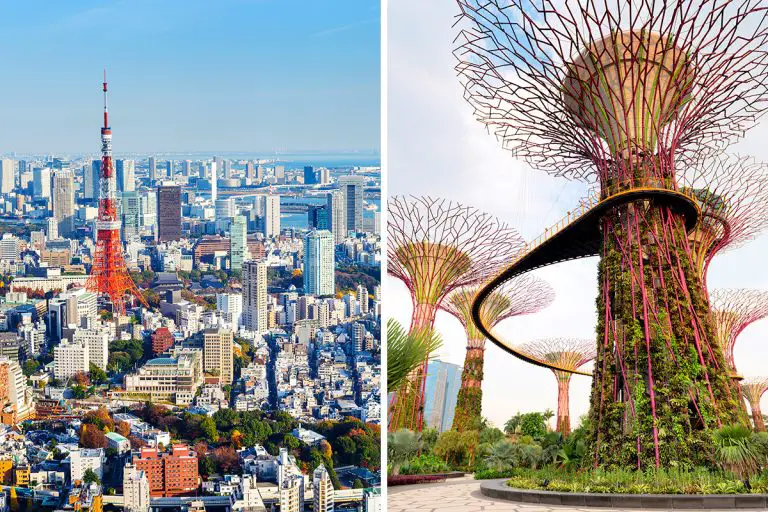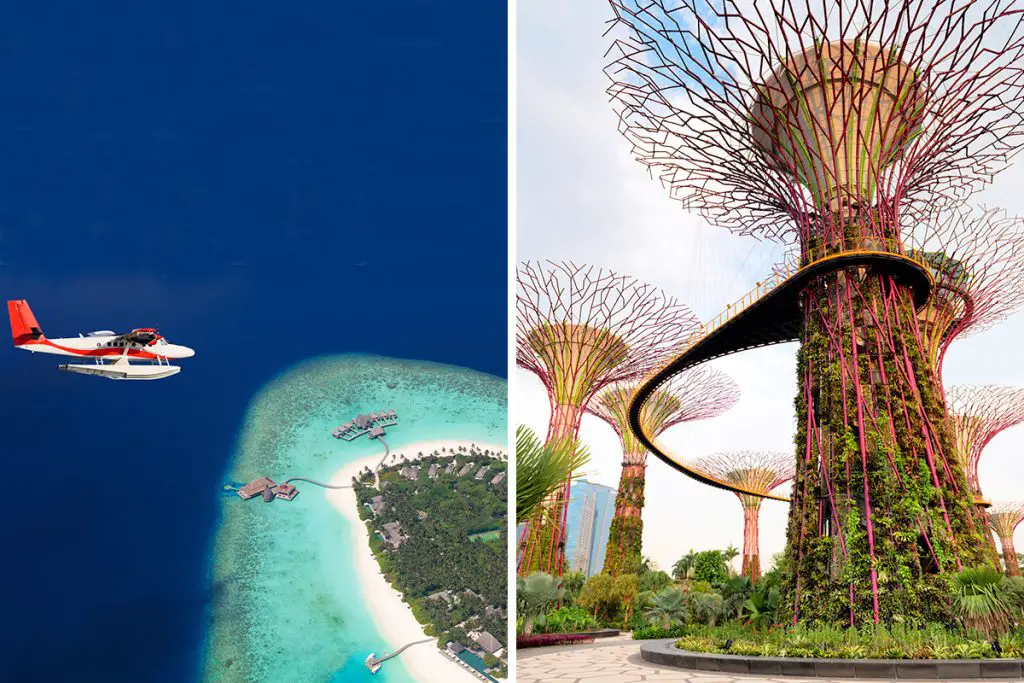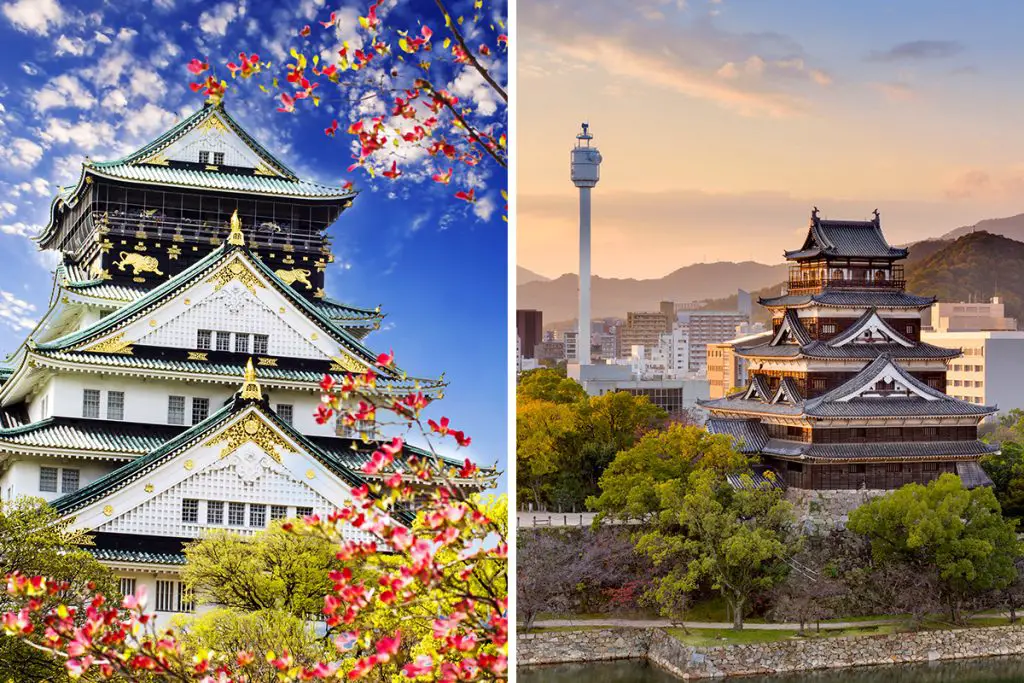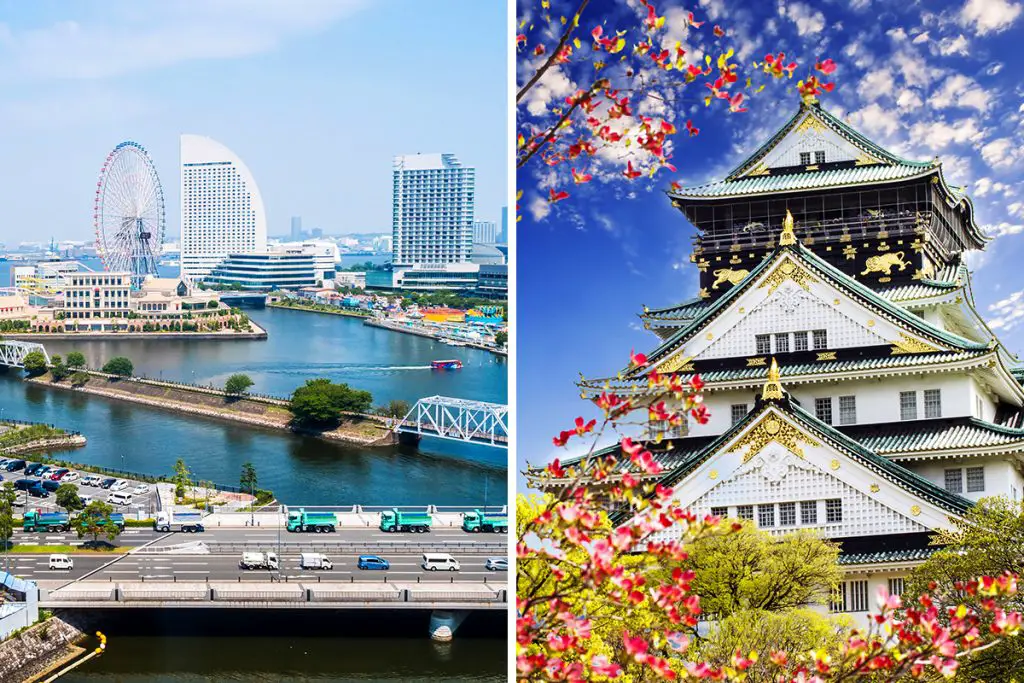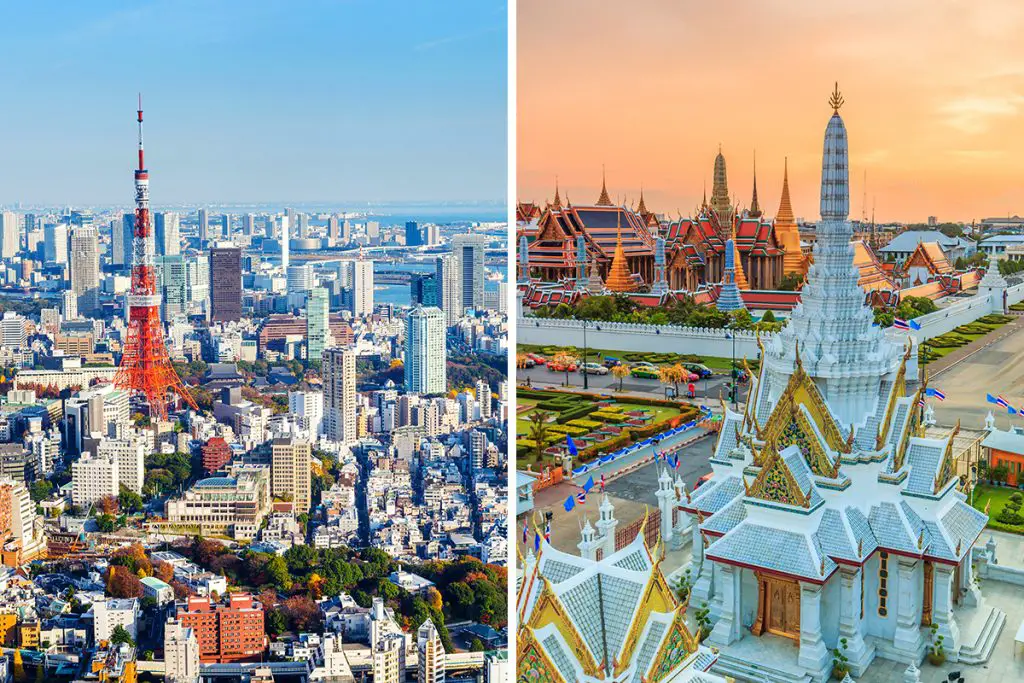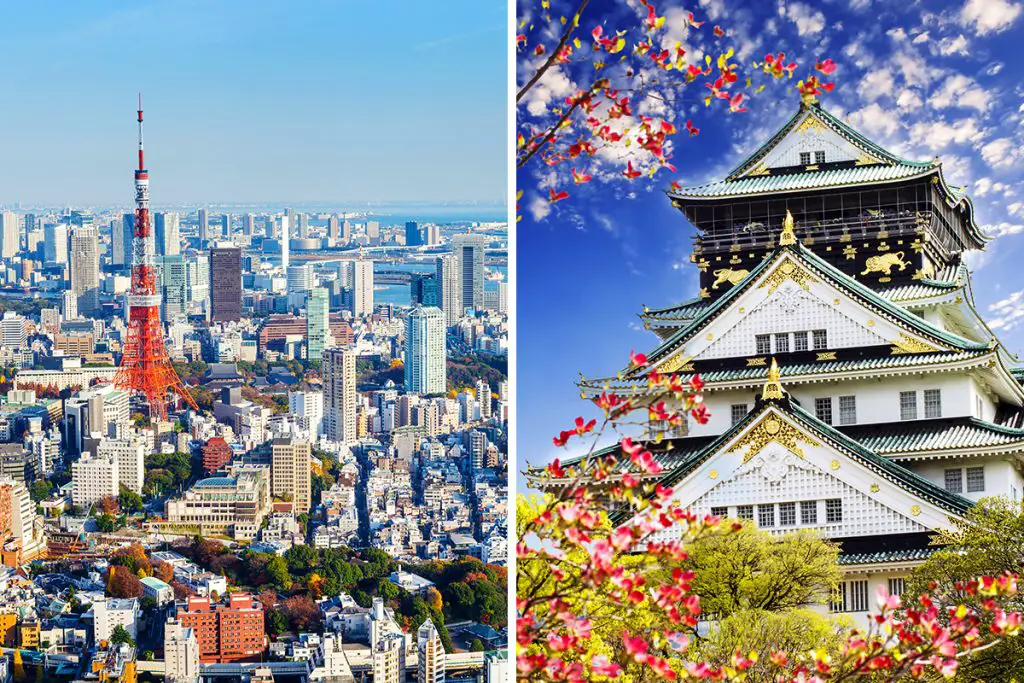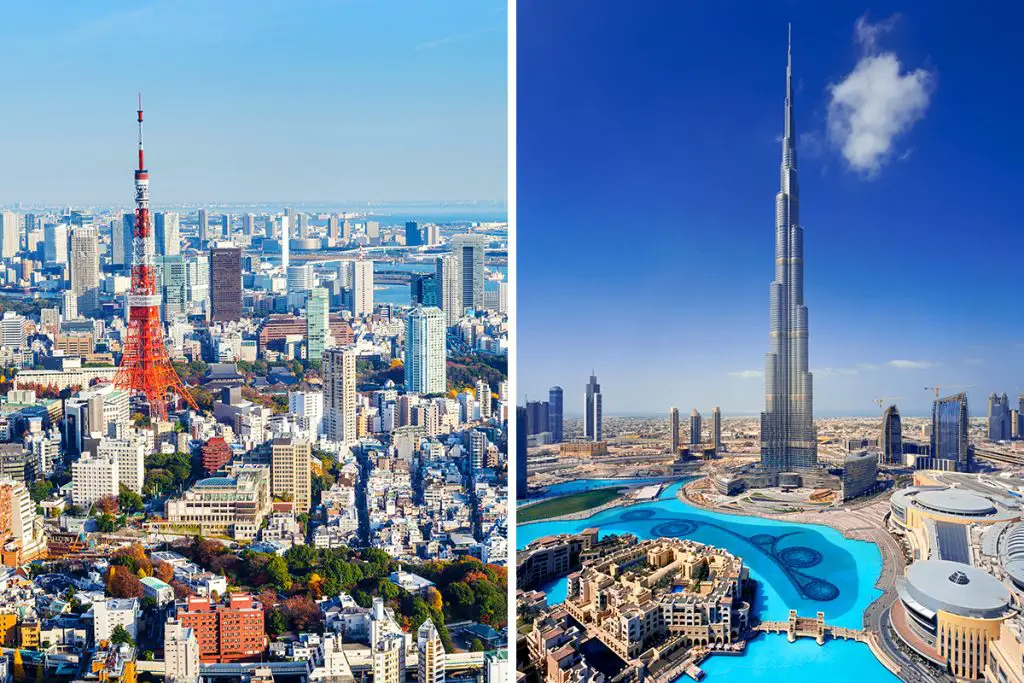Making that final choice isn’t simple. It’s like picking between two brilliant gems in a treasure chest. Both Tokyo and Singapore have unique features that could make either of them your next dream destination. Intrigued? Keep reading to uncover the mystery behind these two fascinating cities and make an informed decision.
History & Culture
Before we dive into the comparisons, let’s set the stage. History and culture are like the roots of a tree, making each city what it is today. They give the place its unique feel, its heartbeat if you will.
Tokyo’s history spans several centuries, deeply rooted in the traditions of Japan. Its culture is a fascinating blend of the ancient and the new. You’ll find centuries-old temples and shrines tucked away in corners of busy streets that echo with the footsteps of samurais from long ago.
Walk a little further, and you may run into a high-tech robot or an ultra-modern skyscraper. Tokyo is like a book you never finish reading, where every chapter feels both new and familiar.
On the other hand, Singapore’s history is much younger but equally compelling. Established as a British trading colony in 1819, Singapore has grown into a diverse nation in a matter of just two centuries.
Here, you can find a mix of Chinese, Malay, Indian, and Western cultures living side by side. Imagine walking through neighborhoods where temples, mosques, and churches coexist in perfect harmony. It’s like a tightly-knit fabric of different threads, each significant yet seamlessly woven into the whole.
Now, Tokyo offers you the chance to immerse yourself in Japanese art forms like ikebana (flower arranging) and tea ceremonies that have been passed down for generations. The city breathes a sort of disciplined beauty and respect for tradition.
Singapore, however, is your playground if you want to experience a kaleidoscope of cultures in a more modern setting. The city celebrates diversity at every corner, be it through public art or festivals like Chinese New Year and Diwali.
In summary, Tokyo will envelop you in a deep-rooted, rich history and disciplined cultural practices. Singapore will captivate you with its youthful energy and vibrant cultural mix. Your choice depends on what type of cultural experience you’re seeking. Are you drawn to the allure of ancient traditions or the vivacity of a younger, more diverse culture?
Attractions & Activities
You’re craving an adventure, aren’t you? An unforgettable journey awaits you, whether you’re wandering through Tokyo’s bustling streets or discovering the many layers of Singapore. Let’s compare these destinations, shall we?
Tokyo is a city where technology and nature coalesce. Imagine standing at the summit of Mt. Takao, a mountain roughly 599 meters (1,965 feet) tall, to view the city skyline framed by cherry blossoms. A different kind of beauty awaits you at the Tokyo National Museum, where you can see Japan’s historical art and treasures.
If you’re a fan of anime, a visit to Akihabara is a must. This district is a paradise for anime and manga enthusiasts, like walking through a living comic book.
Singapore offers equally riveting attractions, albeit in a compact setting. Take a cable car ride to Sentosa Island, where you’ll find the award-winning S.E.A. Aquarium, but let’s not dive into that water just yet!
You can also get lost in the splendor of the Gardens by the Bay, featuring the renowned Supertree Grove and Flower Dome. If you love wildlife, the Singapore Zoo offers a unique “Night Safari” where you can encounter nocturnal creatures under the moonlight.
Both cities present an array of activities too. Tokyo lets you experience traditional tea ceremonies or explore the city through guided walking tours that dig deep into its history. In Singapore, you can try your hand at sailing at the Marina Bay or take a cooking class to learn how to whip up some local delicacies.
In summary, both Tokyo and Singapore offer a whirlwind of activities and attractions that cater to a variety of interests. Tokyo leans towards a blend of the old and new, from nature hikes to anime adventures. Singapore packs a punch with its modern, outdoor attractions and globally recognized landmarks. Your preference will hinge on whether you want a more traditional or a more modern kind of fun.
Beaches
Ah, the call of the sea! Whether it’s the tranquil sound of waves or the feel of sand under your feet, beaches have a unique allure. How do Tokyo and Singapore stack up in this sandy showdown?
Tokyo might not be your go-to destination for beaches, but it does have some hidden gems.
Odaiba Beach, for instance, offers an 800-meter (about 2,625 feet) artificial stretch where you can relax and take in views of the Rainbow Bridge and Tokyo Tower. Another option is Zushi Beach, located about 1 hour from central Tokyo. Zushi is a 600-meter (approximately 1,968 feet) beach that’s popular among locals for water sports like windsurfing.
Singapore, on the other hand, offers the sandy stretches of Sentosa Island. Palawan Beach is about 3.2 kilometers (almost 2 miles) long and is known for its calm waters and pirate-themed bars nearby. Then there’s Tanjong Beach, a more secluded option, perfect for those seeking a quieter, more tranquil environment.
If you’re into water sports, both cities have their offerings too. While Tokyo’s beaches are more geared towards windsurfing and paddleboarding, Sentosa in Singapore offers a wide range of water activities like kayaking and skimboarding.
In conclusion, both Tokyo and Singapore offer distinct beach experiences. Tokyo provides a more local feel with fewer crowds, ideal for activities like paddleboarding or windsurfing. Singapore, however, is your pick if you’re after golden sands and a variety of water sports in a more tropical setting. What’s it going to be: a quieter beach day with a view of the city skyline or a tropical paradise with a cocktail in hand?
Eating, Drinking & Nightlife
So, you’re a foodie with a zest for the night, huh? Both Tokyo and Singapore promise an experience to tickle your taste buds and light up your evenings. Let’s dig in!
First off, Tokyo is a haven for lovers of Japanese cuisine. From sushi bars to ramen stalls, the city offers an array of flavors. Venture into Tsukiji Outer Market for some of the freshest seafood you’ll ever taste. For something unique, you might want to try Okonomiyaki, a type of savory pancake that you often cook yourself at the table.
In Singapore, it’s all about variety. The city is a melting pot of culinary influences from China, India, and Malaysia. Head to Hawker Centers like Lau Pa Sat or Maxwell Road to try iconic dishes like Hainanese chicken rice and Char Kway Teow, a flavorful stir-fried noodle dish.
Now let’s talk drinks. Tokyo invites you to explore the world of sake, a traditional Japanese rice wine. You can even visit sake breweries for a guided tour. Meanwhile, Singapore offers a different take. Fancy a Singapore Sling? This gin-based cocktail was invented at the Raffles Hotel and is a must-try.
As for nightlife, Tokyo is famous for its themed bars and bustling karaoke rooms. A trip to Shibuya will give you a sense of the city’s vibrant after-hours scene. Singapore’s nightlife is a bit more glitzy, with its rooftop bars like CE LA VI offering panoramic views of the cityscape.
To sum it up, Tokyo offers a deep dive into Japanese cuisine, traditional drinks like sake, and a nightlife filled with local flair. Singapore serves up a smorgasbord of flavors, iconic cocktails, and a more cosmopolitan night scene. What are you in the mood for: a traditional Japanese experience or a multicultural fest?
Shopping
Got an itch for some retail therapy? Tokyo and Singapore both offer incredible shopping experiences, but each with its own unique style. Let’s uncover what’s in store.
Tokyo is the dreamland for tech-savvy folks and fans of Japanese pop culture. Akihabara, often referred to as “Electronic Town,” offers everything from the latest gadgets to anime merchandise. For high-end fashion, the luxury boutiques in the Ginza district are your go-to.
In Singapore, the famous Orchard Road is a shopper’s paradise. This bustling boulevard is lined with numerous malls like ION Orchard and Paragon, featuring a mix of high-end brands and local labels. If you’re into unique, local designs, Haji Lane offers an array of independent boutiques.
Both cities offer traditional goods as well. Tokyo’s Asakusa district is well-known for its souvenir shops where you can buy handcrafted items like folding fans and Japanese dolls. In Singapore, you can visit ethnic neighborhoods like Chinatown and Little India for cultural trinkets and spices.
To sum it all up, Tokyo offers a blend of tech gadgets, luxury, and traditional goods. Singapore excels in delivering a diverse range of high-end brands, local designs, and cultural items. Ready to shop till you drop? Which city’s shopping scene beckons you?
Accommodation
Thinking about where to hang your hat during your travels? The right accommodation can make all the difference. Let’s look at Tokyo and Singapore to see where you can get the coziest rest.
In Tokyo, you’ll find a wide array of options to suit every budget. For a truly Japanese experience, consider staying in a ryokan—traditional inns with tatami-mat rooms and communal baths. Capsule hotels are another uniquely Japanese experience, offering a tiny but efficient sleeping space.
If you’re looking for luxury, neighborhoods like Roppongi and Shinjuku offer top-notch hotels like the Park Hyatt or the Ritz-Carlton.
Singapore, on the other hand, is a bit pricier when it comes to lodging. The iconic Marina Bay Sands is a high-end option offering a rooftop pool with panoramic city views.
Budget travelers can still find reasonable options in neighborhoods like Bugis or Little India, where hostels and guesthouses are common. You can also find family-friendly serviced apartments with kitchenettes if you’re traveling with little ones.
In summary, Tokyo offers a diverse range of accommodations from traditional Japanese inns to capsule hotels, fitting a variety of budgets. Singapore leans toward the more luxurious but also offers budget and family-friendly options. So, are you into experiencing traditional Japanese hospitality, or are you after a room with a grand view?
Family-Friendliness & Children’s Activities
Taking the family on an unforgettable adventure? Both Tokyo and Singapore offer a world of fun for younger travelers. Let’s compare.
In Tokyo, you’ll find world-renowned theme parks like Tokyo Disneyland and Tokyo DisneySea. For more interactive learning, the National Museum of Nature and Science in Ueno Park offers a range of exhibits tailored for young minds. And let’s not forget the Pokémon Center for the little collectors in your crew.
Singapore offers its own kind of family magic. Universal Studios Singapore is a must-visit with its seven themed zones. The Science Centre Singapore is another educational spot where kids can learn while having fun. Sentosa Island also offers several family-friendly attractions like the Adventure Cove Waterpark.
Both Tokyo and Singapore provide great public facilities for families. You’ll find clean public restrooms equipped with baby-changing facilities and nursing rooms in shopping malls and attractions in both cities. Plus, kid-friendly menus are common in restaurants in both destinations.
In short, both Tokyo and Singapore shine when it comes to family-friendly attractions and amenities. Whether you’re looking to explore a fantasy world or engage in interactive learning, both cities have your little adventurers covered. Which city will capture your kids’ imaginations?
Getting There & Getting Around
Ready to jet off? Both Tokyo and Singapore have well-connected airports and public transportation. Let’s get into the details.
To get to Tokyo, most international flights land at either Narita Airport, about 60 kilometers (about 37 miles) from central Tokyo, or Haneda Airport, approximately 20 kilometers (about 12 miles) from the city center. In Singapore, you’ll land at Changi Airport, around 20 kilometers (about 12 miles) from the downtown area.
Now, moving around these cities is a breeze. Tokyo’s metro system is expansive but can be crowded during rush hours. A one-way ticket costs around $1.50-$3.00. Singapore’s MRT (Mass Rapid Transit) is less crowded and also very efficient, with similar pricing to Tokyo’s metro.
Both cities offer other options like buses and taxis. In Tokyo, taxis start at around $7 and can quickly add up if you’re going a long distance. In Singapore, starting fares are around $3 but also increase with distance. Rideshare services are available in Singapore, but they’re less common in Tokyo.
In summary, getting to and navigating through both Tokyo and Singapore is straightforward and convenient, with well-connected airports and efficient public transportation. Each city offers its unique transit experiences, so whether you opt for Tokyo’s extensive metro or Singapore’s immaculate MRT, you’re well served. So, are you ready to navigate the intricate subway maps of Tokyo or zip through Singapore’s efficient MRT?
Weather
Wondering what to pack for your trip to Tokyo or Singapore? Weather can make or break your vacation experience. Let’s dive into the climates of these two incredible destinations.
Tokyo experiences four distinct seasons. Winter, from December to February, is quite chilly but not freezing, with temperatures ranging between 36-50°F (2-10°C). Spring (March to May) is a beautiful season with cherry blossoms, and the temperature is around 48-68°F (9-20°C).
Summer can be hot and humid, from June to August, with temperatures ranging from 70-88°F (21-31°C). Autumn (September to November) is cool and comfortable at 50-72°F (10-22°C).
Singapore, being near the equator, has a tropical rainforest climate. It’s warm and humid year-round, with little variation in temperature, generally between 77-89°F (25-32°C). Rain is more frequent from November to January, but otherwise, it’s consistently hot and humid.
So, if you prefer a destination with a variety of weather conditions and seasonal changes, Tokyo is your pick. On the other hand, if you don’t mind the heat and love a tropical setting, Singapore’s consistent climate will suit you just fine.
Safety
Safety is a top priority when you’re traveling, right? Let’s compare Tokyo and Singapore to see which destination lines up with your comfort zone.
Tokyo is often cited as one of the safest cities in the world. Violent crime is rare, and petty crimes like pickpocketing are not frequent either. However, it’s always smart to stay alert in crowded areas.
Singapore also ranks high on the safety scale. Strict laws and severe penalties for crimes contribute to a low crime rate. You can generally walk around at night without any concerns. However, you should be aware of strict regulations on things like gum-chewing and jaywalking.
Both cities are prone to natural disasters: Tokyo to earthquakes and Singapore to flash floods. It’s wise to familiarize yourself with emergency procedures in either destination.
In summary, both Tokyo and Singapore offer a high level of safety with low crime rates. The choice comes down to personal preference and familiarity with local laws and natural disaster preparedness.
Cost
Money talks, especially when you’re planning a trip. Let’s examine the costs you can expect in Tokyo and Singapore, focusing on food, lodging, and transportation.
In Tokyo, a budget meal will cost you around 800-1000 yen (approximately $7-$9). Mid-range restaurants could set you back 2000-4000 yen ($18-$36) for a three-course meal. Accommodations vary, but 3-star hotels generally cost around $390 per night. For transportation, a one-way ticket on the metro costs about 170-310 yen ($1.50-$2.80).
Singapore is generally more expensive. A budget meal could cost around 10-20 Singapore dollars ($7-$15), while a three-course meal in a mid-range restaurant can go for 40-80 Singapore dollars ($30-$60). 3-star hotels usually average at $300 per night. A one-way MRT ticket costs about 1-3 Singapore dollars ($0.75-$2.25).
In summary, Tokyo offers a wide range of options that can be more budget-friendly, especially for food and lodging for certain types. Singapore leans on the pricier side in all categories. Your choice may depend on how deep your pockets are or what kind of experience you’re looking for.
Which Is Better – Tokyo or Singapore?
So you’ve been on a roller-coaster journey comparing Tokyo and Singapore across a host of factors. Let’s wrap it all up and see which destination shines in various areas, shall we?
When it comes to History and Culture, Tokyo offers a fascinating mix of the old and the new. It’s the place to go if you’re eager to experience seasonal changes and traditions. Singapore, though younger in its historical makeup, offers a melting pot of cultures and is perfect if you’re looking for a more tropical, consistent climate.
For Attractions and Activities, Tokyo has something for every season and taste. From spring’s cherry blossoms to winter’s snow festivals, there’s never a dull moment. Singapore shines with its year-round tropical climate, offering a different yet equally engaging set of activities such as Gardens by the Bay and Sentosa Island.
If you’re a beach bum, Tokyo might not be your first choice as it has limited options. Singapore, with its surrounding islands, offers a better experience for those looking to soak up the sun.
On the Eating, Drinking, and Nightlife front, Tokyo provides a broader range of options, from traditional Izakayas to modern bars. Singapore is pricier but compensates with its diversity in food and high-end nightlife options.
Shopping aficionados will find Tokyo to be a paradise with its myriad options from high-end brands to quirky local stores. Singapore caters more to the luxury shopper, with many high-end brands concentrated in areas like Orchard Road.
If you’re traveling with family, both cities offer a good range of accommodations. Tokyo provides a wider variety of options that can be more budget-friendly, while Singapore leans on the pricier side but often offers more modern amenities.
Transportation in both cities is efficient, but Tokyo has a more complex network that might require some getting used to. Safety is paramount in both cities, and while Tokyo is prone to natural disasters like earthquakes, Singapore faces issues like flash floods.
In summary, if you’re after cultural depth, seasonal changes, and a broad range of activities and food options, Tokyo is your go-to. If a tropical climate, luxurious shopping, and modern amenities are what you seek, then Singapore will not disappoint. Your choice will ultimately hinge on what experiences you value most.

